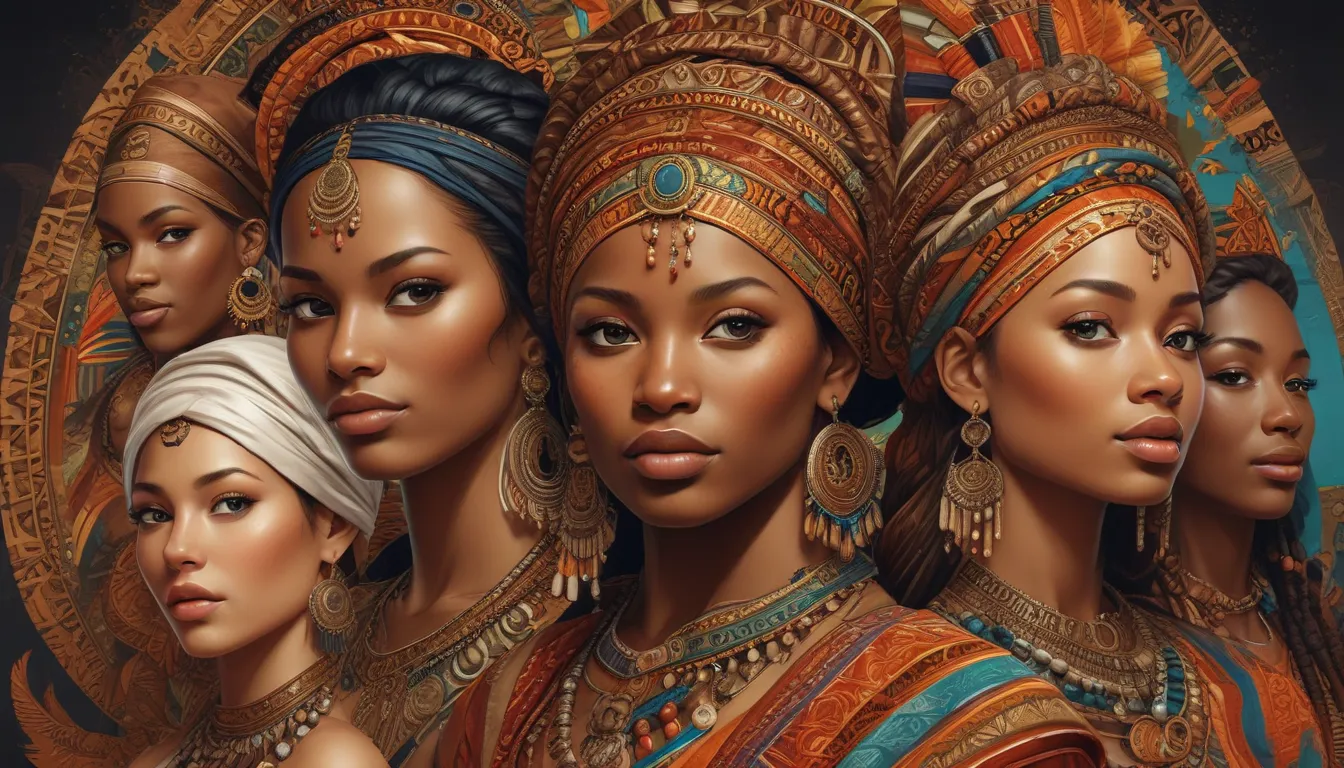A Note About Images: The images used in our articles are for illustration purposes only and may not exactly match the content. They are meant to engage readers, but the text should be relied upon for accurate information.
In a world rich with cultural diversity, ethnicity plays a vital role in shaping our identities and communities. From traditions to language, ethnicity defines who we are and how we interact with the world around us. Let’s delve into the captivating realm of ethnicity and explore 20 intriguing facts that illuminate the complexities of human identity.
Embracing Diversity: A Colorful Tapestry of Cultures
- Embracing ethnic diversity brings new flavors, dances, and stories to our world, creating a more colorful and creative society where everyone feels included and valued.
- Ethnicity shapes our identity, traditions, and values, showing that our differences make us stronger and more resilient as we come together in harmony.
The Cultural Tapestry of Ethnicity
Ethnicity refers to a social group that shares common cultural traditions, values, language, and heritage. It goes beyond mere racial categorization and recognizes the complex cultural identities that make up our society.
A World of Ethnic Diversity
- There are over 5,000 distinct ethnic groups in the world, each with its unique traditions, languages, and customs.
- Human genetic diversity is primarily driven by ethnic differences, offering insights into our evolutionary history and the origins of different ethnic groups.
Language and Ethnic Identity
- Language serves as an essential marker of ethnic identity, reinforcing a sense of shared heritage and belonging.
- Ethnic groups often have their own distinct languages or dialects, passed down through generations to preserve their cultural identity.
Culinary Delights: The Influence of Ethnicity on Food
- Food is a reflection of ethnic diversity, with a glorious array of flavors and ingredients celebrating the culinary traditions of different ethnic groups.
- From spicy Indian curries to savory Italian pasta, the diversity of cuisines around the world highlights the richness of ethnic culinary traditions.
Traditional Attire: Cultural Heritage on Display
- Traditional clothing represents the cultural heritage and pride of ethnic communities, telling a story of history, identity, and craftsmanship.
- From the vibrant colors of African dashikis to the intricate embroidery of Indian saris, traditional attire showcases the beauty and diversity of ethnic cultures.
Preserving Heritage Through Music and Dance
- Music and dance play a crucial role in preserving and expressing ethnic identity, carrying the essence of cultural traditions across generations.
- From the rhythmic beats of African drums to the graceful movements of classical Indian dance, these art forms reflect the diversity and richness of ethnic traditions.
The Intersection of Religion and Ethnicity
- Religion often functions as a defining aspect of ethnic identity, providing a spiritual anchor and a source of communal cohesion.
- Many ethnic groups have unique religious beliefs and rituals that shape their cultural identity and traditions.
Understanding Ethnicity vs. Race
- The concept of race is primarily based on physical characteristics, while ethnicity encompasses shared cultural practices and heritage.
- Ethnicity is a social construct that emphasizes cultural identity, while race has historically been used to categorize individuals based on physical attributes like skin color.
Embracing Diversity: Interethnic Marriages and Globalization
- Marriage between people of different ethnic backgrounds is increasing in a globalized world, fostering cultural exchange and multicultural societies.
- Migration and globalization contribute to ethnic diversity by facilitating the mixing of different ethnic groups and enriching societies with diverse cultural influences.
The Influence of Ethnicity on Social Structures
- Ethnicity can shape social structures and determine the roles and status assigned to individuals within a community.
- It can impact access to resources, opportunities, and power structures, influencing the socio-economic dynamics of a society.
Building Harmony: Resolving Ethnic Conflicts Through Understanding
- Ethnic conflicts often arise from competing interests such as land rights, political power, or cultural differences.
- Understanding these conflicts is crucial for fostering peace, promoting social harmony, and celebrating the diversity of ethnic cultures.
The Power of Storytelling: Preserving Ethnic Traditions
- Oral traditions play a vital role in preserving ethnic customs and history, passing down unique narratives through storytelling, myths, and legends.
- By preserving these traditions, ethnic communities ensure the continuation of their cultural legacy and heritage.
Education as a Tool for Preserving Ethnic Heritage
- Education is essential for preserving and promoting ethnic heritage by incorporating diverse perspectives and histories into the curriculum.
- By fostering a deeper understanding and appreciation for various ethnic groups, educational institutions can help preserve cultural diversity and promote inclusivity.
Individual Identity and Ethnicity
- Ethnicity plays a significant role in shaping individual identity, shaping values, beliefs, and a sense of belonging.
- For many individuals, ethnicity forms a crucial part of their self-identity, providing a foundation for personal development and cultural belonging.
Fostering Innovation: The Creative Power of Ethnic Diversity
- A multicultural and ethnically diverse society fosters creative thinking and innovation by bringing together different perspectives and experiences.
- Ethnic diversity encourages the exchange of ideas and the emergence of new solutions, enriching society with diverse perspectives and experiences.
Cultural Resilience: Navigating Challenges Through Ethnic Identity
- In the face of adversity, ethnic communities demonstrate remarkable resilience by preserving language, customs, and traditions.
- This resilience helps communities maintain their unique cultural identities and navigate the challenges of the modern world with strength and pride.
Promoting Inclusivity: Recognizing Ethnic Diversity
- Recognizing and celebrating ethnic diversity is essential for fostering inclusivity and social cohesion.
- By embracing different cultures and perspectives, societies can create a more equitable and harmonious world where every individual feels valued and acknowledged for their heritage.
Strengthening Social Bonds Through Diversity
- Appreciating and respecting different ethnicities strengthens social bonds, promotes understanding, and reduces prejudice.
- By embracing diversity, individuals and communities can foster empathy, promote collective action, and create a more inclusive society where everyone can thrive.
Conclusion: Embracing the Beauty of Ethnic Diversity
Exploring the rich tapestry of human diversity through ethnicity reveals the complexities and nuances that define who we are. From language to traditions, ethnicity shapes our identities and societies, highlighting the beauty of cultural diversity. By celebrating and embracing ethnic diversity, we create a more harmonious world where each individual’s heritage is valued and respected. Let ethnicity serve as a bridge that connects us all, celebrating our differences and uniting us in our shared humanity.
FAQs: Exploring Ethnic Diversity
-
What is ethnicity? Ethnicity refers to a person’s cultural or ancestral identity based on shared characteristics such as nationality, language, religion, and traditions.
-
Is ethnicity the same as race? No, ethnicity and race are not the same. While race is primarily based on physical characteristics, ethnicity encompasses cultural and social aspects of a person’s identity.
-
How many ethnic groups exist in the world? It is estimated that there are thousands of ethnic groups globally, each contributing to the rich tapestry of human diversity.
-
Can someone have multiple ethnicities? Yes, individuals often have mixed ethnic backgrounds resulting from intermarriage or migration, adding to the richness of cultural heritage.
-
Is ethnicity a fixed trait? No, ethnicity is not a fixed trait and can evolve over time, influenced by factors such as migration, adoption, and cultural assimilation.
-
How does ethnicity contribute to society? Ethnicity plays a crucial role in shaping the cultural fabric of societies, influencing language, art, music, and social structures, contributing to the overall diversity of communities.
-
How can we promote ethnic diversity and inclusivity? We can promote ethnic diversity and inclusivity by embracing different cultures, challenging stereotypes, fostering dialogue, and creating opportunities for cultural exchange and understanding.
Trust in Quality Content
Our commitment to delivering trustworthy and engaging content is at the heart of what we do. Each fact on our site is contributed by real users like you, bringing a wealth of diverse insights and information. To ensure the highest standards of accuracy and reliability, our dedicated editors meticulously review each submission. This process guarantees that the facts we share are not only fascinating but also credible. Trust in our commitment to quality and authenticity as you explore and learn with us.






